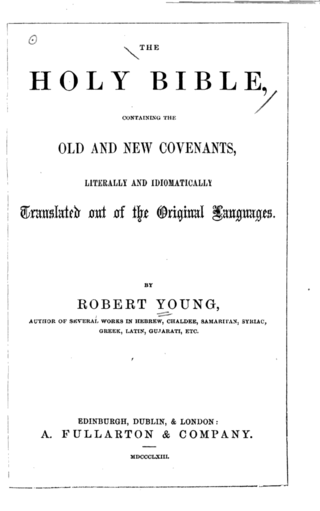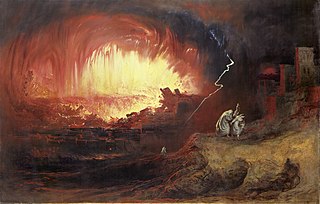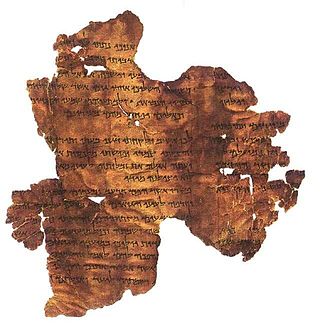Ebez also rendered Abez, was a town in the allotment of the tribe of Issachar, at the north of the Jezreel Valley, or plain of Esdraelon. F. R. and C. R. Conder (1879), believed that it was probably the ruins of el-Beida, but William Robertson Smith (1899) expressed doubt about this identification. According to the 1915 International Standard Bible Encyclopedia (1915), the location is not known. It is mentioned only in Joshua 19:20, where various manuscripts of the Septuagint render it as Rebes, Aeme, or Aemis. It is mentioned on the façade of the Mortuary Temple of Ramesses III at Medinet Habu as Apijaa.
According to the Bible, Admah was one of the five cities of the Vale of Siddim. It was destroyed along with Sodom and Gomorrah. It is supposed by William F. Albright to be the same as the "Adam" of Joshua 3:16. The location of Admah is unknown, although Bryant G. Wood a proponent of the southern theory for the Cities of the Plain identified the site with Numeira, but later changed it to Khirbat al-Khanazir Jordan, although it was only a cemetery during the Bronze Age and proponents of the northern theory for the Cities of the Plain identify the site with Tel Nimrin, Jordan.

Rahab was, according to the Book of Joshua, a Gentile and a Canaanite woman who resided within Jericho in the Promised Land and assisted the Israelites by hiding two men who had been sent to scout the city prior to their attack. In the New Testament, she is lauded both as an example of a saint who lived by faith, and as someone "considered righteous" for her works. According to biblical research, the author intended that she did not actually contribute in conquering the city, but rather saved herself and her family from death by the Israelites' forces.

Lot was a man mentioned in the biblical Book of Genesis, chapters 11–14 and 19. Notable events in his life recorded in Genesis include his journey with his uncle Abraham; his flight from the destruction of Sodom and Gomorrah, during which his wife became a pillar of salt, and being intoxicated by his daughters so they could have incestuous intercourse with him to continue their family line.
Partial Bible translations into languages of the English people can be traced back to the late 7th century, including translations into Old and Middle English. More than 100 complete translations into English have been produced. A number of translations have been prepared of parts of the Bible, some deliberately limited to certain books and some projects that have been abandoned before the planned completion.

Forbidden fruit is a name given to the fruit growing in the Garden of Eden which God commands mankind not to eat. In the biblical story, Adam and Eve ate the fruit from the tree of the knowledge of good and evil and are exiled from Eden:
And the Lord God commanded the man, saying, Of every tree of the garden thou mayest freely eat:
But of the tree of the knowledge of good and evil, thou shalt not eat of it: for in the day that thou eatest thereof thou shalt surely die.

Young's Literal Translation (YLT) is a translation of the Bible into English, published in 1862. The translation was made by Robert Young, compiler of Young's Analytical Concordance to the Bible and Concise Critical Comments on the New Testament. Young used the Textus Receptus (TR) and the Masoretic Text (MT) as the basis for his translation. He wrote in the preface to the first edition, "It has been no part of the Translator's plan to attempt to form a New Hebrew or Greek Text—he has therefore somewhat rigidly adhered to the received ones." Young produced a "Revised Version" of his translation in 1887, but he stuck with the Received Text. He wrote in the preface to the Revised Edition, "The Greek Text followed is that generally recognized as the 'Received Text,' not because it is thought perfect, but because the department of Translation is quite distinct from that of textual criticism, and few are qualified for both. If the original text be altered by a translator, the reader is left in uncertainty whether the translation given is to be considered as that of the old or of the new reading." A new Revised Edition was released ten years after Robert Young's death on October 14, 1888. The 1898 version was based on the TR, easily confirmed by the word "bathe" in Revelation 1:5 and the word "again" in Revelation 20:5. The "Publishers' Note to the Third Edition" explains, "The work has been subjected to a fresh revision, making no alteration on the principles on which the Translation proceeds, but endeavouring to make it as nearly perfect in point of accuracy on its present lines as possible." A major revision of Young's Literal Translation in contemporary English, called the Literal Standard Version, was released in 2020.
The lotus tree is a plant that is referred to in stories from Greek and Roman mythology.

Calotropis procera is a species of flowering plant in the family Apocynaceae that is native to Northern and Tropical Africa, Western Asia, South Asia and Indochina. It typically reaches a height between 6 feet (1.8 m) to 8 feet (2.4 m), and rarely to as high as 15 feet (4.6 m), and grows in sunny to partly-shaded habitats such as disturbed and overgrazed lands, rangeland, roadsides, river flats and coastal dunes. Its green fruits contain a toxic milky sap that is extremely bitter and turns into a latex-like substance, which is resistant to soap.

Citrullus colocynthis, with many common names including Abu Jahl's melon, colocynth, bitter apple, bitter cucumber, egusi, vine of Sodom, or wild gourd, is a poisonous desert viny plant native to the Mediterranean Basin and West Asia, especially the Levant, Turkey, and Nubia.

Calotropis is a genus of flowering plants in the family Apocynaceae, first described as a genus in 1810. It is native to southern Asia and North Africa.

Alcoholic beverages appear in the Hebrew Bible, after Noah planted a vineyard and became inebriated. In the New Testament, Jesus miraculously made copious amounts of wine at the wedding at Cana. Wine is the most common alcoholic beverage mentioned in biblical literature, where it is a source of symbolism, and was an important part of daily life in biblical times. Additionally, the inhabitants of ancient Israel drank beer and wines made from fruits other than grapes, and references to these appear in scripture. However, the alcohol content of ancient alcoholic beverages was significantly lower than modern alcoholic beverages. The low alcohol content was due to the limitations of fermentation and the nonexistence of distillation methods in the ancient world. Rabbinic teachers wrote acceptance criteria on consumability of ancient alcoholic beverages after significant dilution with water, and prohibited undiluted wine.

In the Abrahamic religions, Sodom and Gomorrah were two cities destroyed by God for their wickedness. Their story parallels the Genesis flood narrative in its theme of God's anger provoked by man's sin. They are mentioned frequently in the prophets and the New Testament as symbols of human wickedness and divine retribution, and the Quran also contains a version of the story about the two cities.

Watermelon is a flowering plant species of the Cucurbitaceae family and the name of its edible fruit. A scrambling and trailing vine-like plant, it is a highly cultivated fruit worldwide, with more than 1,000 varieties.

Sodomy, also called buggery in British English, generally refers to either anal sex between people, or any sexual activity between a human and another animal (bestiality). It may also mean any non-procreative sexual activity. Originally the term sodomy, which is derived from the story of Sodom and Gomorrah in the Book of Genesis, was commonly restricted to homosexual anal sex. Sodomy laws in many countries criminalized the behavior. In the Western world, many of these laws have been overturned or are routinely not enforced. A person who practices sodomy is sometimes referred to as a sodomite, a pejorative term.
There are a number of passages in the Hebrew Bible that have been interpreted as involving same-sex sexual acts, desires, and relationships. The passages about homosexual individuals and sexual relations in the Hebrew Bible are found primarily in the Torah and have been interpreted as referring primarily to male homosexual individuals and sexual practices.
Eshcol is a term in the Hebrew Bible. It may refer to:
Isaiah 5 is the fifth chapter of the Book of Isaiah in the Hebrew Bible or the Old Testament of the Christian Bible. This book contains the prophecies attributed to the prophet Isaiah, and is one of the Books of the Prophets.

Hosea 11, the eleventh chapter of the Book of Hosea in the Hebrew Bible or the Old Testament of the Christian Bible, has been called "one of the high points in the Old Testament". In the Hebrew Bible is a part of the Book of the Twelve Minor Prophets. According to the Jamieson-Fausset-Brown Bible Commentary, this chapter contains prophecies attributed to the prophet Hosea, son of Beeri, about God's former benefits, and Israel's ingratitude resulting in punishment, but God still promises restoration.

Song of Songs 2 is the second chapter of the Song of Songs in the Hebrew Bible or the Old Testament of the Christian Bible. This book is one of the Five Megillot, a collection of short books, together with Ruth, Lamentations, Ecclesiastes and Esther, within the Ketuvim, the third and the last part of the Hebrew Bible. Jewish tradition views Solomon as the author of this book, and this attribution influences the acceptance of this book as a canonical text. This chapter contains a dialogue in the open air and several female poems with the main imagery of flora and fauna.












